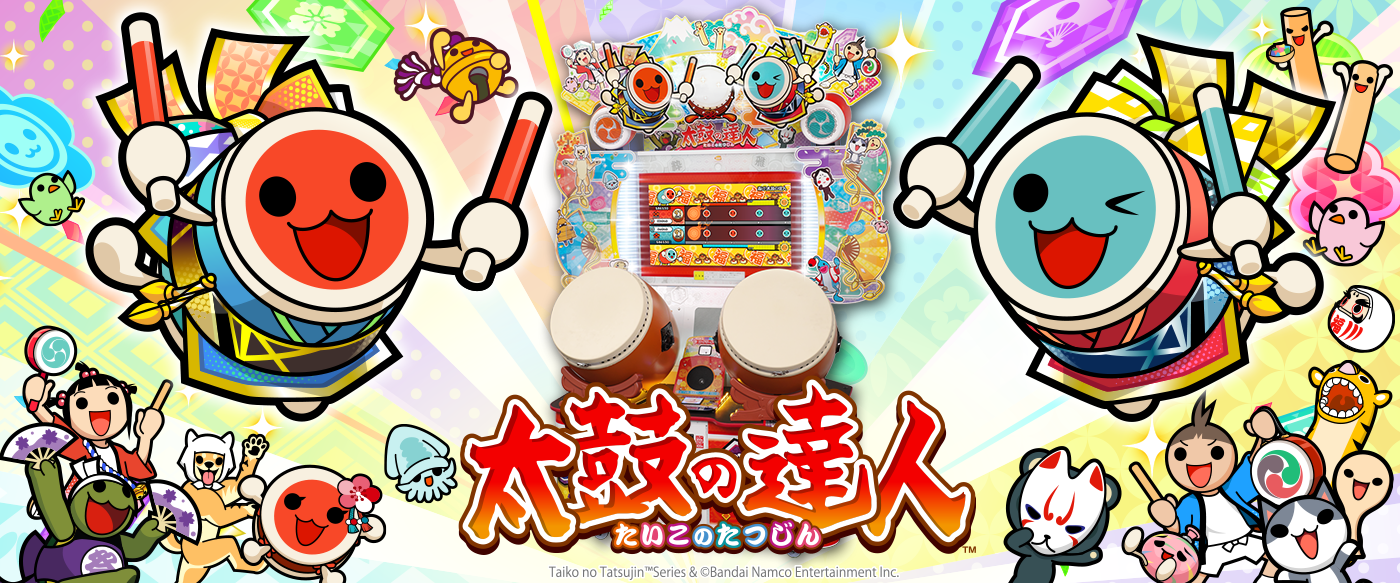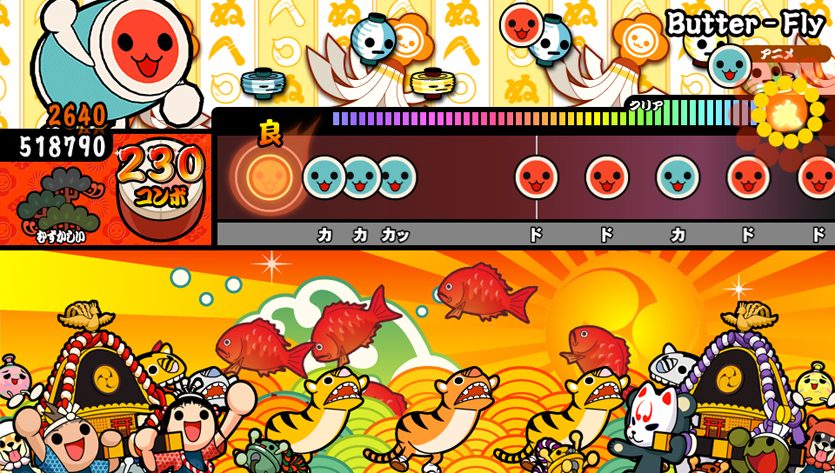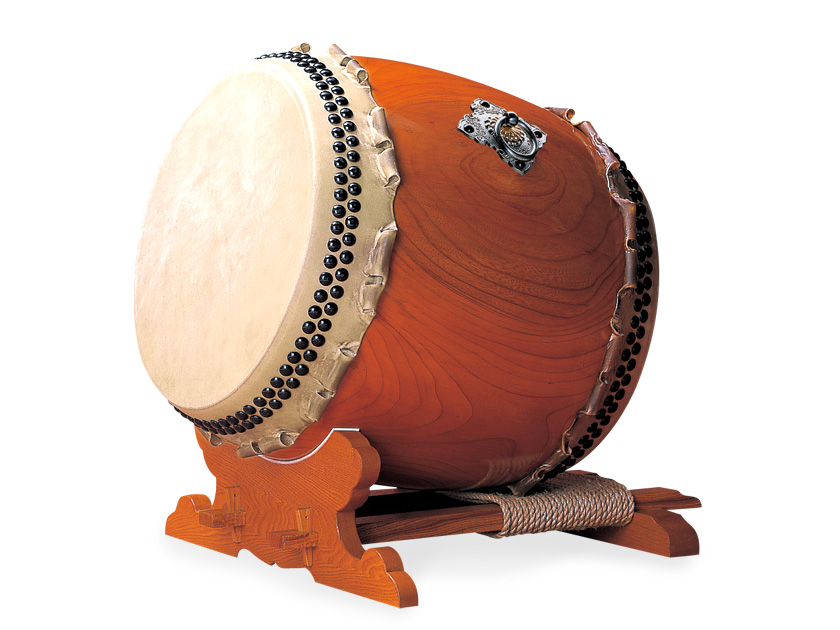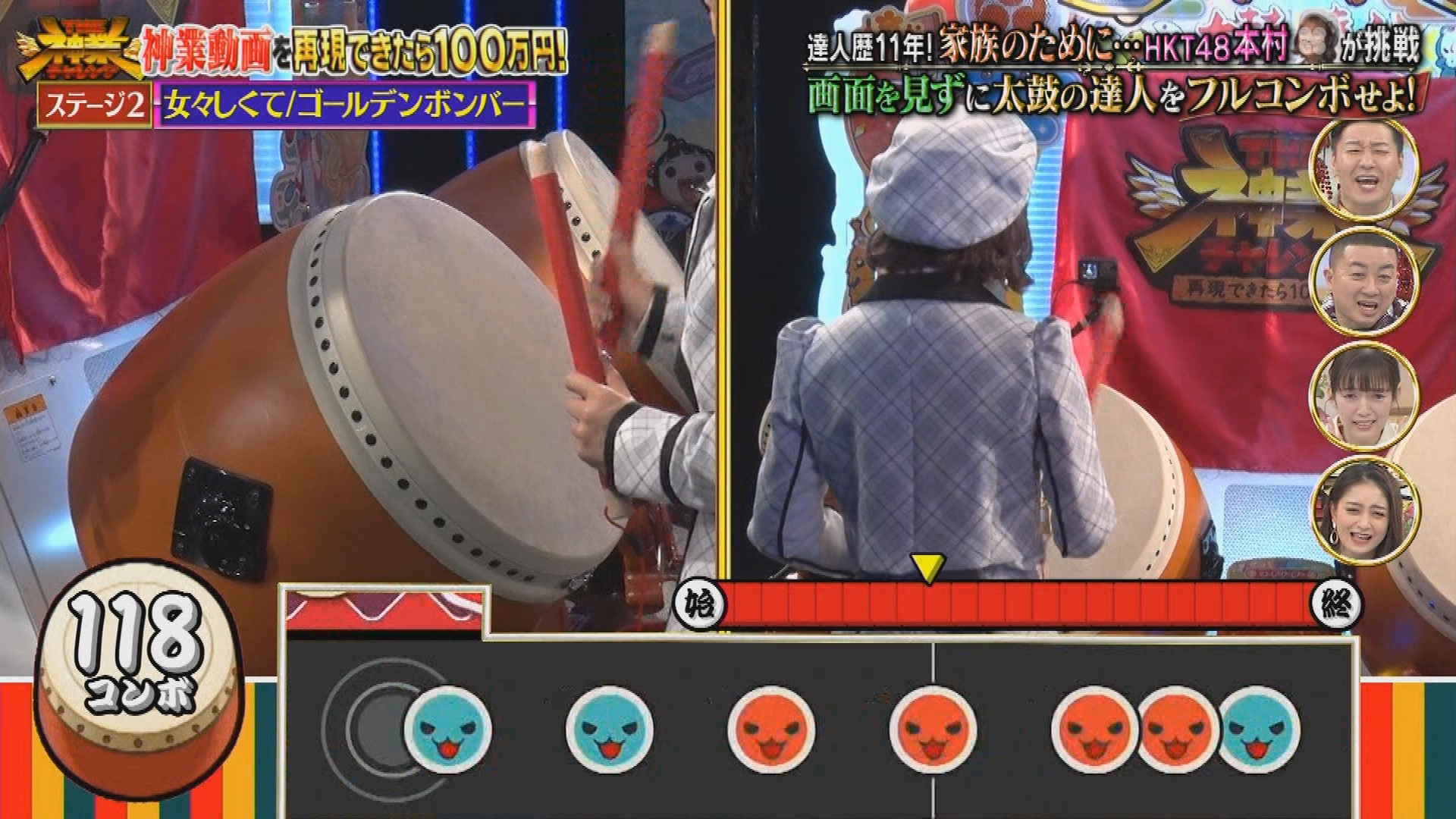
Introduction
Taiko no Tatsujin (太鼓の達人 in Japanese; literally, master of the drums) is an arcade rhythm game released by Namco in 2001. The objective of the game is to hit the taiko (Japanese drum) in rhythm with the beat of a music chosen by the player. On the screen, notes will scroll from right to left, and will reach a transparent round objective: it is at that instant that players have to hit the drum!

By having children-friendly easy songs but also very challenging difficult songs, Taiko no Tatsujin maintained its popularity to a large audience throughout the years, and is still one of the most popular arcade game in Japan, and worldwide (Taiko no Tatsujin can even be played in Singapore). The game is also available on numerous platforms such as Nintendo Switch, PS4, and even laptops and smartphones!
The Element Tetrad
Mechanics
In more than 20 years of history, the mechanics of Taiko no Tatsujin have never changed. The rules and the goal have always been the same: the player has to hit the middle of the drum when a red note is on the objective, and on the rid of the drum when the note is blue. These simple and unique game mechanics makes it easy for new players to tryout the game, and is one of the principal reasons explaining its popularity.
Dynamics
Simple mechanics does not mean simple dynamics at all. In Taiko no Tatsujin, the difficulty of songs have increased like economic inflation these days. To counter more and more difficult songs, experienced players have developed more and more advanced techniques of using drumsticks. There is a constant “battle” between the game development team making new song charts which look impossible, and players who somehow always manage to get perfect scores with some training. This dynamic enables to keep a stable amount of players.
Story
It is the basic element of a game Taiko no Tatsujin have almost forgotten about. Except in some console games, it never had a proper story plot with progression. However, it was not necessary at all for Taiko no Tatsujin to have a story to be a successful game. It makes sense, as it is not what rhythm game players are seeking for.
Aesthetics and Technology
Aesthetics and Technology are 2 very important aspects which are interleaved in arcade rhythm games. Taiko no Tatsujin, being a very old game, had to improve throughout the years in order to remain alive on the harsh market of arcade rhythm games in Japan. Every 6 years (approx.), Taiko no Tatsujin arcade machines have a major upgrade. Since 2011, players can have an account registered on a card to save their data. That was very new for arcade games back at the time. Another example of notable upgrade happened in 2020, when all machines in Japan became equipped with a 120 fps monitor and better speakers, and had their UI redesigned for a smoother and more comfortable experience for the player.

Around the birth of Taiko no Tatsujin, the drum attached to the arcade machine was a very new, innovative way of simulating a real Taiko drum. It is equipped with sensors, often criticised in the past for not reacting to the player’s drumstick hits sometimes. However, this is a problem which has been solved in the recent years, which is a great factor reducing player’s anxiety when playing. Improving this technology created more player dynamics; more techniques to hit the beat of the music!
Lenses
The Lens of Challenge (#38)
As every successful rhythm game, Taiko no Tatsujin welcomes a wide range of players with different skill levels. It can even arguably be the rhythm game with the widest palette of player because there is a challenge which will fit any player. Over the years, the arcade version of the game accumulated in-game songs. Recently, it even reached over 1000 songs! Taking into account that each song has at least 4 difficulties (easy/normal/hard/master), we can clearly say that the humongous variety of available challenge is a huge strength of Taiko no Tatsujin. For the most skilled players, there is even a mode where the challenge is to complete a pre-determined set of 3 difficult songs with very harsh conditions such as “Miss less than 3 times (over the 3 songs)”. For example, there was a challenge between 2015 and 2016 where only 1 player in the world managed to complete it perfectly!
The Lens of Visible Progress (#55)
As any activity in life, it feels satisfying to see and feel the progress we make. In Taiko no Tatsujin, players progress very fast as they get used to the mechanics of the game easily. Their arms start to manage the drum hitting movement well. Then, they can try harder songs as (almost) everything is unlocked from the beginning. Players progress at a pace they decide by challenging themselves in the way they desire. Every good enough scores gives a crown, which are then collected by players for completing many songs. Moreover, every performance on a song gives a grade depending on the score. It is easy for players to realise their improvement when they manage to complete a song with a difficulty they never tried before, or they replay a song after a while and make an improvement on their score. This visible progress in Taiko no Tatsujin is very satisfying and motivating, and is what keeps a large playerbase.
The Lens of Time (#27)
What determines the length of one gameplay in Taiko no Tatsujin is only you, which is another big strength of the video game. There is no too short or too long playing session as long as the player can control themselves well. As one song is 2 minutes in average, and 1 credit in the arcade machine (most often) gives players 3 songs to play, Taiko no Tatsujin sessions can be very short… or very long, if you keep inserting coins and playing like me. For the numerous qualities enumerated previously, players can even lose the sensation of time and keep playing for a few hours without even realising it!
The Lens of Spectation (#95)

As you, the reader, might have noticed by watching the YouTube videos embedded in the blog, good Taiko no Tatsujin gameplays are really impressive, and catch the attention of the viewers. In real life, children and adults who are not used to the game often gather in circle behind the player doing some crazy gameplay. Even on the Internet, Taiko no Tatsujin gameplay videos have a lot of views, and is definitely one of the rhythm game which makes the most views on YouTube. As an example, the gameplay video of Gurenge in master difficulty, the opening song of the famous anime Demon Slayer, has over 10 million views from an international community. What really makes Taiko no Tatsujin different from other games and really proves it is spectacular is that it even often appears on the Japanese television, where other funky impressive plays are performed (such as the gameplay with the screen hidden for the player as shown above), often with a cash prize in case of success.
Conclusion
Taiko no Tatsujin is a rhythm game which knows well its playerbase. It kept improving where it needed (aesthetics, technology, new challenges…) while never really put strength on what players are not looking for (a story mode, new mechanics…). This is why it is one of the most successful arcade rhythm game in existence.
